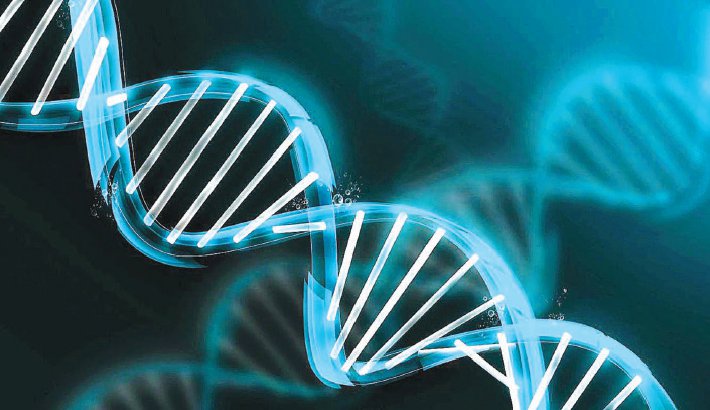DNA: The Inborn Identity | Abdullah Al Moinee

Abdullah Al Moinee
[ www.daily-sun.com/printversion/details/361238/DNA:-The-Inborn-Identity ]
[ Origin (Excerpted from): essenceofengineering.blogspot.com/2019/06/dna-inborn-identity-by-abdullah-al.html ]
Identity is the inborn definition of a design which denotes the information to represent the interconnected independence of individuality. DNA is such a molecule delineating the inborn identity. DNA sustains the genetic directions utilized in the growth, development, functioning and reproduction of human being along with all known living organisms and many viruses. All the possible scenarios of a person's life must conform to the designs in DNA.
DNA (Deoxy Ribonucleic Acid) & RNA (Ribonucleic Acid) are nucleic acids. Alongside proteins, lipids and complex carbohydrates, they are one of the four major types (nucleic acids, proteins, lipids & carbohydrates) of macromolecules that are essential for all known forms of life.
DNA was first isolated by Friedrich Miescher in 1869. Its molecular structure was first identified by James Watson and Francis Crick at the Cavendish Laboratory within the University of Cambridge in 1953, whose model-building efforts were guided by X-ray diffraction data acquired by Raymond Gosling, who was a post-graduate student of Rosalind Franklin. DNA is used by researchers as a molecular tool to explore physical laws and theories, such as the ergodic theorem and the theory of elasticity. The unique material properties of DNA have made it an attractive molecule for material scientists and engineers interested in micro- and nano-fabrication.
Well, DNA is the store house of data. 1 single gram of DNA is capable of holding an amazing 700 terabytes of data. If we want to store all digital information in this world, all we need is 2 grams of DNA. Scientists have found out that a total of 510 DNA codes have been lost throughout the process of human evolution. Besides, it has been found in research that if one could type 60 words per minute, eight hours a day, it would take approximately 50 years to type the human genome. Moreover, one can fit 25,000 strands of DNA side by side into the width of a single human hair. If all three billion letters in the human genome were stacked one millimeter apart, they would reach a height 7,000 times the height of the Empire State Building.
Moreover DNA of anyone is 99.9 percent identical to that of anyone else. It’s the other 0.1 percent that makes one person different from another. There were some ancient viruses that used to infect humans but today, 8% of human DNA is actually made of those ancient viruses. It is so true that, human DNA is 95% identical to the DNA of chimpanzees. Indeed, it is surprising but human DNA is 50% identical to the DNA of bananas and 40-50% of green leafy cabbages.
However the fact is that DNA is the blueprint of our lives. The DNA is tightly coiled up and structured into 46 chromosomes. Our chromosomes are arranged in pairs. We inherit one copy of the pair from each of our parents. One chromosome can have as little as 50 million base pairs or as much as 250 million base pairs. Even though DNA codes all the information that makes up an organism, DNA is built using only four building blocks, the nucleotides adenine (A), guanine (G), thymine (T), and cytosine (C). The design instructions in DNA are spelled out as particular sequences of these four bases. This is analogous to conveying instructions in printed books by particular arrangements of the twenty-six letters of the alphabet. In the case of genes, however, there are only four letters in the alphabet. The designs are called genes. Some genes play a role in regulating other genes, and some design ribonucleic acid, a close relative of DNA. But mostly, the designs in DNA are for the class of chemicals called proteins. The human body contains tens of thousands of kinds of proteins, which do all the body's work. Interactions among those proteins, and interactions between them and environmental factors account for the processes and structures of the body. Those processes and structures are manifested as inherited traits.
Every aspect of nature reveals a deep mystery and touches our sense of wonder and so the DNA does with its inborn and infinite identity. The deep mystery of DNA creates wonder which is the basis of man's desire to know more. And something very surprising about DNA is that a group of scientists have transcribed the song “It’s a Small World After All” into the DNA of a bacteria that is resistant to radioactivity, so that in the event of a nuclear catastrophe we could pass a message on to future intelligent life.
Moinee, A. Al. "DNA: The Inborn Identity” The Daily Sun. 9(71). 03 Jan. 2019. The Hood. 8(38).
